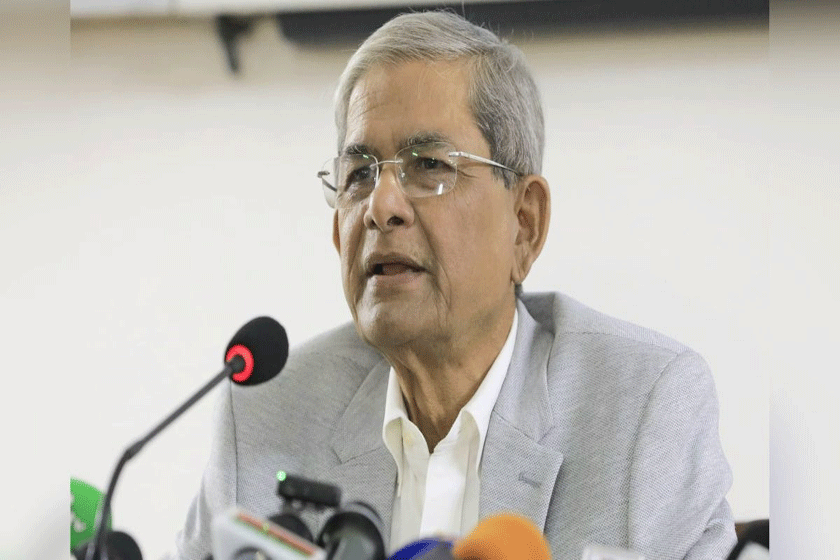
Symbolic image JAYANTA
Govt, local TV channels losing revenue
While Bangladesh’s private TV channels are struggling to survive with revenue as they are excessive in numbers compared to the advertisement market, a big portion of the funds is being drained out of the country for feeding foreign channels and online-based media outlets.
The mobile telecom sector alone has drained out Tk 8,700 crore funds from the country's advertisement market in the last five years, diverting the majority part of the revenue to the foreign channels riding on social media platforms like YouTube that the local media could have enjoyed.
Besides, the government is deprived of huge revenue because the entire capital flight is done without the government’s notice and not paying tax and Vat which economists and experts fear would cause severe loss to the economy and make the local media.
Local companies are advertising in foreign electronic media and online-based publication companies without paying any taxes, says Bangladesh Telecommunication Regulatory Commission (BTRC).
"In the last five years, private mobile phone companies in Bangladesh have given advertisements to foreign media worth more than Tk 8,700 crore," BTRC said.
With the present trend of audience choice which is fast-paced change, the number of TV viewers is declining drastically as the majority of the youth and other groups of the population are now more engaged in social media and YouTube content.
In the context of this new media trend, TV managers are now uploading the content on the YouTube channels in order to reach the viewers on YouTube.
Facebook was once only a networking platform to get connected with friends and communities, but with time, has grown to be the largest social media platform and has evolved to be a prevailing rostrum for entertainment and news. It’s a different world now — a free space for all to share news and entertainment content. Whenever someone desires, they can easily share their content. YouTube further strengthened the new media with its various types of content flow. A new profession has also been added to the dictionary, called a Youtuber. Besides this, there are subscription-based streaming services.
While the subscribers have to pay 300-500 taka for getting the cable network, viewers can now get access to Netflix, Hulu, Disney Plus, HBO, Peacock TV- by paying a monthly subscription fee starting from TK 400 to TK 800 — access to a huge plethora of content made by national and international artists. All together, these have resulted in the fall in revenue of the TV channels. As a consequence, TV journalists and other employees have become sufferers in terms of their wages and benefits.
A Wage Board has not yet been set up for television industry journalists and artisans. Lots of journalists have to work for lesser wages compared to their qualifications; even the 9th wage board that is passed for the newspaper could have protected the TV journalists’ wage and benefits had it included the broadcast industry. Some channel owners are paying much lower than what a print media journalist receives now. However, the reality doesn’t suggest that the TV owners are getting a good return on their investment. In the last ten years, the number of television channels has increased exponentially. Where earlier the advertising market was limited to 5 to 6 channels, now there are 34 channels.
Even more so, with the help of consumer technology, the advertising agencies also regularly provide advertisements on foreign TV channels. According to the Cable Television Network Act 2006, it is a punishable offense to advertise on a foreign channel and no one has ever been brought under the law.
As a result of the new media, the advertising market is slowly shrinking. TV channels are looking for ways to reduce costs. According to research reports from a non-profit organization, only a small number of journalists who are successful in making the channels or talk-shows popular is getting a high salary, that is 2 to 2 and a half lakh taka per month. The number is considerably low — not even more than 10. Popular television journalists like Samia Zaman, Munni Saha, J E Mamun, Nazmul Ashraf, Kazi Jesin, Nobonita Chowdhury can work in such a wage. Others are earning way below; even a banker of the same educational qualification is earning more than a journalist. The risk-takers of the society, the journalists, should have been treated way better financially.
With the addition of TV channels, the market, alongside the quality of TV programs, has also declined. Assistant Professor Mohammad Saiful Alam Chowdhury of the Department of Mass Communication and Journalism at Dhaka University is researching how satisfied professional journalists are with their jobs. According to a survey conducted at the Process Institute in Bangladesh, 31 percent of journalists report that the salary they receive is less than their qualifications. If more channels are added to this industry, the advertising market will be even more contracted. In this age of new media, keeping the television industry afloat requires timely policy.
Advertisements are being given to foreign channels, on the other hand, a large number of advertisements are also being given to foreign online companies. As a result, the market for private television advertisements is getting smaller and smaller. The time has come for the government to facilitate new policies for the television industry. It must be retained that the television industry is providing 14 to 15 thousand jobs in the media industry.
In this context, TV personality M Hamid said, “The market for TV channels has shrunk due to the existence of excessive TV channels more than what is needed. Except for a couple, no TV channel is profitable. In this situation, TV journalists are not being evaluated properly. There should be a pay scale for this, just as there is for the newspaper. Then professionalism in journalism will increase. The new generation will feel encouraged to enter this profession.”












0 Comments